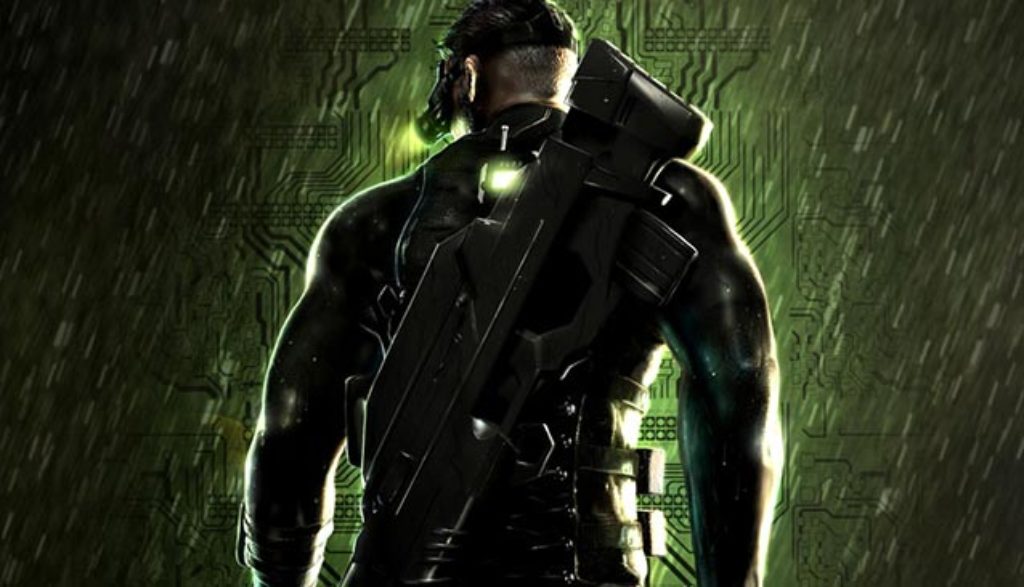
Novelist Tom Clancy’s name has become synonymous with military action and espionage. The latest Splinter Cell video game comes from a franchise wielding that name. (Oddly enough, Chaos Theory wasn’t penned by Clancy, but his stylistic fingerprints are all over it.)
In the game, Sam Fisher, a member of the deep-cover spy agency known as Third Echelon, races to find a computer programmer who has vanished. The programmer’s algorithms have the capacity to hijack everything from the stock market to the power grid … to ballistic missiles. So he’s a bit of a prize for both the good guys and the bad. To find him, Sam has to infiltrate the lairs of nefarious malcontents in search of clues. At stake? Global cyber catastrophe with heavy real-world fallout.
Run Silent, Run Deep
Most of the time Sam operates on a “need to know” basis. Every mission comes with specific objectives, such as breaking into a bank, planting e-mails, stealing bearer bonds, then pilfering information from the bank servers. Each task is a discrete piece of the whole puzzle.
And discretion is the name of this game. Progress depends on making as little noise as possible. Though Chaos Theory is an action game, much of the “action” involves lurking in the shadows as you await the most opportune moment to strike or harvest data, then getting out as stealthily as possible.
Your success is ranked based on how well you evade the lights, guards, cameras and booby traps strategically placed to alert the bad guys to your presence. One level, for example, requires Sam to shimmy down a rope into a bank guarded by a shimmering maze of laser trip “wires”—like something straight out of Mission: Impossible.
Break a Leg … or Neck
So, staying out of sight is preferable to open confrontation. But that doesn’t mean killing is taboo. In fact, Sam Fisher is an efficient killing machine. In the cinematic intro to the game, which gives a foretaste of the violent ways Fisher will eliminate his opponents throughout the game, he slays perhaps a dozen men: tossing enemies from buildings, slitting throats, breaking necks and blowing off heads.
One signature move requires dangling upside down from the ceiling—like a deadly spider—waiting for prey to wander beneath. Picking up a human being by his head and twisting it guarantees he won’t bother you again. Likewise, slitting enemies’ throats with a knife accomplishes the task equally well. Graphic sound effects of vertebrae snapping and blood gurgling add to the game’s dark realism (though blood is rarely shown). Occasional profanities (“Die, you bastard,” “Oh, h—,” “Oh, s—“) pepper the script as well.
I, Assassin
Whereas many of today’s action franchises encourage jumping into the fray with both barrels blazing, taking a Halo-like approach to this game’s sophisticated challenges virtually guarantees you’ll have to do that level over again. This is a thinking player’s game that rewards forethought and precision.
But it also rewards brutality. For me, the game’s most problematic element is the way it invites players to climb into the psyche of a character who’s essentially a cold-blooded assassin. I realize, of course, that Sam Fisher is just doing his “job” by protecting his country from its evil adversaries. Nevertheless, the deliberate way he must wait for the right moment to dispatch an unsuspecting foe demands a premeditated dimension of virtual violence not found in the non-stop carnage of Halo 2 or the gang-related bloodletting of Grand Theft Auto: San Andreas.
Those games definitely outpace Splinter Cell: Chaos Theory in quantity of kills. But something about the quality of the violence in this game is deeply unsettling in its own right—national security notwithstanding.

After serving as an associate editor at NavPress’ Discipleship Journal and consulting editor for Current Thoughts and Trends, Adam now oversees the editing and publishing of Plugged In’s reviews as the site’s director. He and his wife, Jennifer, have three children. In their free time, the Holzes enjoy playing games, a variety of musical instruments, swimming and … watching movies.